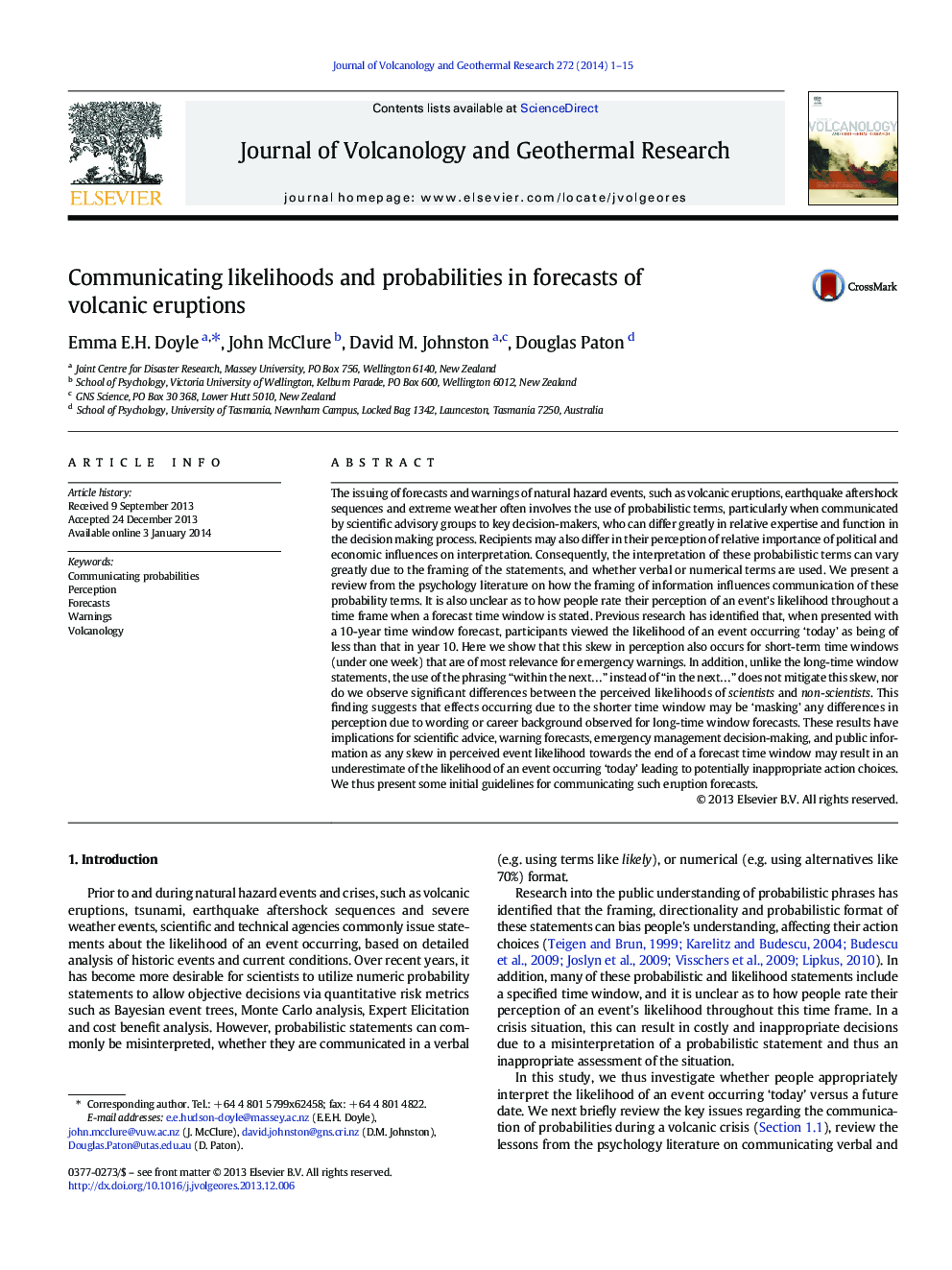| کد مقاله | کد نشریه | سال انتشار | مقاله انگلیسی | نسخه تمام متن |
|---|---|---|---|---|
| 4712408 | 1638349 | 2014 | 15 صفحه PDF | دانلود رایگان |
• We review the literature on the communication of probability statements.
• We investigate event likelihood perception for probabilistic time window forecasts.
• Individuals skew their event likelihood perception towards the end of a time window.
• Perceived event likelihoods are skewed for both short and long time windows.
• We provide recommendations for communication of volcanic eruption forecasts.
The issuing of forecasts and warnings of natural hazard events, such as volcanic eruptions, earthquake aftershock sequences and extreme weather often involves the use of probabilistic terms, particularly when communicated by scientific advisory groups to key decision-makers, who can differ greatly in relative expertise and function in the decision making process. Recipients may also differ in their perception of relative importance of political and economic influences on interpretation. Consequently, the interpretation of these probabilistic terms can vary greatly due to the framing of the statements, and whether verbal or numerical terms are used. We present a review from the psychology literature on how the framing of information influences communication of these probability terms. It is also unclear as to how people rate their perception of an event's likelihood throughout a time frame when a forecast time window is stated. Previous research has identified that, when presented with a 10-year time window forecast, participants viewed the likelihood of an event occurring ‘today’ as being of less than that in year 10. Here we show that this skew in perception also occurs for short-term time windows (under one week) that are of most relevance for emergency warnings. In addition, unlike the long-time window statements, the use of the phrasing “within the next…” instead of “in the next…” does not mitigate this skew, nor do we observe significant differences between the perceived likelihoods of scientists and non-scientists. This finding suggests that effects occurring due to the shorter time window may be ‘masking’ any differences in perception due to wording or career background observed for long-time window forecasts. These results have implications for scientific advice, warning forecasts, emergency management decision-making, and public information as any skew in perceived event likelihood towards the end of a forecast time window may result in an underestimate of the likelihood of an event occurring ‘today’ leading to potentially inappropriate action choices. We thus present some initial guidelines for communicating such eruption forecasts.
Figure optionsDownload as PowerPoint slide
Journal: Journal of Volcanology and Geothermal Research - Volume 272, 15 February 2014, Pages 1–15
